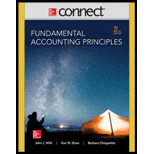
Contribution margin means sales price less variable costs.Contribution represents the portion of sales revenue that is not consumed by variable costs and so contributes to the coverage of fixed costs.
Contribution margin ratio means the difference between a company's sales and variable expenses, expressed as a percentage.
The contribution margin ratio is a formula that calculates the percentage of contribution margin relative to net sales, put into percentage terms.
The break-even point formula is calculated by dividing the total fixed costs of production by the price per unit less the variable costs to produce the product.
Break-even Point in Sales Dollars can be determined by dividing the company's total fixed expenses by the contribution margin ratio. The ratio can be calculated using company totals or per unit amounts.
To Calculate:The contribution margin, contribution margin ratio, break even point in units and in dollars calculated is asked to be calculated in the specific question.
Want to see the full answer?
Check out a sample textbook solution
Chapter 21 Solutions
FUND.ACCT.PRIN -ONLINE ONLY >I<
- A purchase commitment represents a What? A. An option to purchase B. A contingent asset C. A sale on credit D. A firm order to buy MCQarrow_forwardMercury Ltd. has a debt-to-equity ratio of 0.60. Its total shareholders' equity is $3 million, and current liabilities total $950,000. How much long-term debt is outstanding? A. $500,000 B. $800,000 C. $850,000 D. $250,000arrow_forwardApproximately how much of every retail sales dollar is made up of merchandise costarrow_forward
- Question: Accounting - TJ's has annual sales of $813,200, total debt of $171,000, total equity of $396,000, and a profit margin of 5.78 percent. What is the return on assets? A) 8.29 percent B) 6.48 percent C) 9.94 percent D) 7.78 percent E) 8.02 percent HELParrow_forwardAnswer please general accountingarrow_forwardhelp his answerarrow_forward
- The following credit sales are budgeted by Windsor Discount Retail Company: January $287600 February 423000 March 592200 April 507600 The company's past experience indicates that 70% of the accounts receivable are collected in the month of sale, 20% in the month following the sale, and 8% in the second month following the sale. The anticipated cash inflow for the month of March is $497440. $507600. C$522148. $473760.arrow_forwardThe fixed overhead deferred in ending inventory is?arrow_forwardJust in time inventory systems primarily aim to ?arrow_forward
- The following information was taken from Kingbird Electrical Service Company cash budget for the month of July: Beginning cash balance $150000 Cash receipts 144000 Cash disbursements 204000 If the company has a policy of maintaining an end of the month cash balance of $150000, the amount the company would have to borrow is $60000. $90000. $43200. $30000.arrow_forwardJournalize entries 1. Cash balance per bank, July 31, $8,004. 2. July bank service charge not recorded by the depositor $46. 3. Cash balance per books, July 31, $8,096. 4. Deposits in transit, July 31, $3,266. 5. $1,840 collected from a customer for Sheridan Company in July by the bank through electronic funds transfer. The collection has not been recorded by Sheridan Company. 6. Outstanding checks, July 31, $1,380.arrow_forwardOPD, who is claimed as a dependent by his parents, is 17. He received income of $3,400 from a trust fund and $700 from wages. He had $1,200 in itemized deductions. What is his taxable income?arrow_forward

 AccountingAccountingISBN:9781337272094Author:WARREN, Carl S., Reeve, James M., Duchac, Jonathan E.Publisher:Cengage Learning,
AccountingAccountingISBN:9781337272094Author:WARREN, Carl S., Reeve, James M., Duchac, Jonathan E.Publisher:Cengage Learning, Accounting Information SystemsAccountingISBN:9781337619202Author:Hall, James A.Publisher:Cengage Learning,
Accounting Information SystemsAccountingISBN:9781337619202Author:Hall, James A.Publisher:Cengage Learning, Horngren's Cost Accounting: A Managerial Emphasis...AccountingISBN:9780134475585Author:Srikant M. Datar, Madhav V. RajanPublisher:PEARSON
Horngren's Cost Accounting: A Managerial Emphasis...AccountingISBN:9780134475585Author:Srikant M. Datar, Madhav V. RajanPublisher:PEARSON Intermediate AccountingAccountingISBN:9781259722660Author:J. David Spiceland, Mark W. Nelson, Wayne M ThomasPublisher:McGraw-Hill Education
Intermediate AccountingAccountingISBN:9781259722660Author:J. David Spiceland, Mark W. Nelson, Wayne M ThomasPublisher:McGraw-Hill Education Financial and Managerial AccountingAccountingISBN:9781259726705Author:John J Wild, Ken W. Shaw, Barbara Chiappetta Fundamental Accounting PrinciplesPublisher:McGraw-Hill Education
Financial and Managerial AccountingAccountingISBN:9781259726705Author:John J Wild, Ken W. Shaw, Barbara Chiappetta Fundamental Accounting PrinciplesPublisher:McGraw-Hill Education





